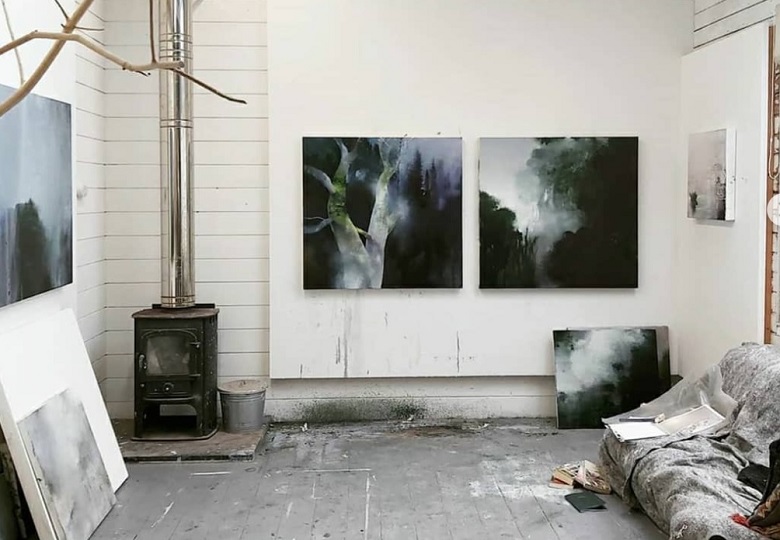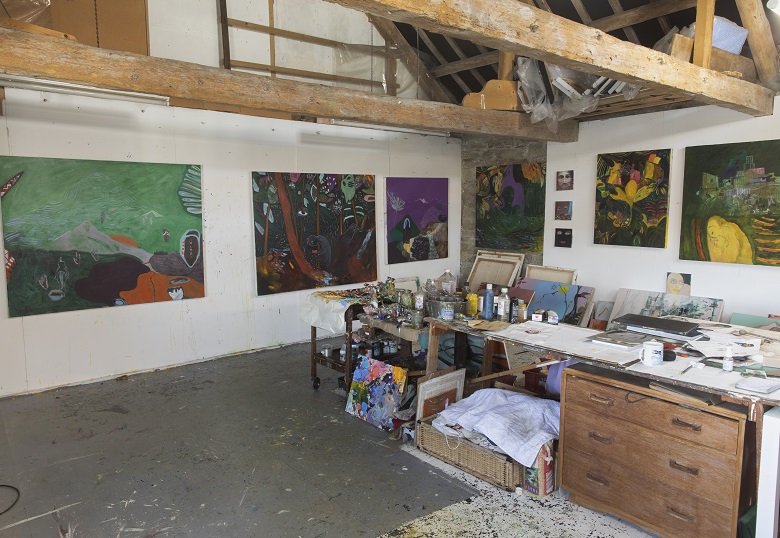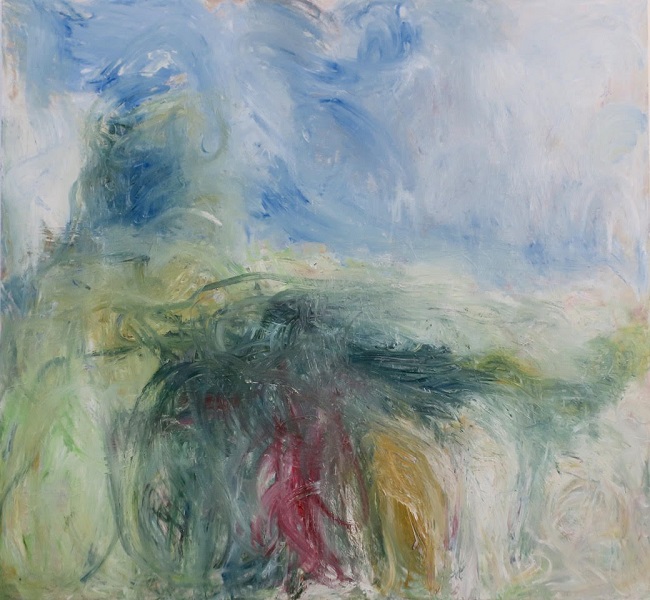|
|
|
home
| exhibitions |
interviews
| features
| profiles
| webprojects
| archive
|
|
Seven Painters Kate Reeve-Edwards poses questions to the seven participants in 'New Landscape Paintings'
Michael Porter What draws you to paint the minutiae of the earth (i.e. your 'dirt series' or your leaf studies)? It's all inside the description of place. When we look at the landscape we often think we are painting the landscape yet we are only actually painting a description of it. We are trying to interpret what it is like to be in that landscape. When you look down and see things like pebbles, or sticks, or leaves, or moss, it is these small pieces that make up the landscape just as much as the larger features. When we see the world in front of our eyes, we imagine we see the whole scene instantly; we forget our eyes can only focus in a very limited way. Our brain, however, works so quickly and amalgamates all these separate pieces of information in a nano-second. I like to emphasize the world is made of many different images that are continually changing.
Lucy Willow You use a lot of symbolism and metaphorical devices in your work, can you elaborate on the motifs you are using within the film? They arrive in surprising ways. I was looking for a setting to put this 'mourner' character in. I wanted to find an underworld space and I found it in the discovery of this well in a memorial garden in Lamorna. The well has then become a metaphor for grief, a space where the mourner resides. I was interested in the mourner as the archetype of grief, the idea of an Irish Keening and the hiring of mourners to weep and sing in Gaelic to the dead. This has become very important how the women externalised the grief of the community, becoming the vessels for a collective mourning.
Gareth Edwards Does the pathetic fallacy of your work, the 'emotional weather', depend on your specific psychological mood or does it pertain more to an enduring understanding of the human context? It privileges the universal, however through a filter of my current poetic interest. It is always an attempt at reaching for the universal rather than the specific. It's about beauty and making space for the viewer. With my piece 'passenger', for instance, there is a restless atmosphere but it pertains to the universal: when you are sitting in the back of the car, with your head resting against the window and your eyes are watching the landscape slip by. This is what I am capturing: watching the green landscape slip by. I like landscape which is non-specific because it becomes a space where you can indulge your day dreams, and those dreams would not be accessed without this looking through the periphery of your eye.
Anthony Garratt Can you take me through your painting process? I have sporadic ideas; the process very much depends on what I have been thinking about and the subject matter of the piece. My recent paintings have been about empty roads as a result of lockdown, these have been connected to a road trip I had in California 10 years ago. My style switches a lot between what I am trying to represent and the location, for instance these California pieces are about memory and are cinematic, therefore I found that spray paint was the right medium to depict this. It is a fast-paced medium, garish, and human looking, much like the landscape I am representing. All my paintings have a spontaneity about them; I work quickly and jump between ideas. They are rapid right up until their last moments, the final details applied in a slower, more analysed fashion to ensure depth-of-field.
Andrew Hardwick You say your paintings are about memory, can you expand on this psychological element? All paintings are fundamentally psychological but mine are specifically linked to memories of walks, memories of light, memories of weather: the feelings I had in those places. My paintings are intermediaries between the psychological and the physical landscape. There is a long history with the places I paint and this past comes out in the painting as texture. I often paint the intersection between the man made and the natural and explore the relationship between the two. For instance, a quarry is man-made and a horrendous hole in the ground yet it is simultaneously an aesthetic place of power and beauty. I increasingly paint places that no longer exist, ghost planes that only exist in memory.
Marie-Claire Hamon What is the role of the figure in your work? The figure brings focus to the painting and brings the viewer into the work in a mirroring way. The figure defines the landscape, it adds to, opens the narrative of the painting, both in the story telling and in the visual quality of the painting, it often brings together the various parts of the painting. In 'The Forager', the figure sets the landscape as a place to find sustenance, the landscape is not just a magical woodland; it's magical because it provides life. So, the figure is related to the landscape and is an integral part of it.
Richard Cook You refer to your paintings as dreams, reflections, and memories, are these tethered to the places you paint from? Or emerge when you apply paint to paper? My inner turmoil latches onto the Landscapes, like a bird of prey taking a fish out of the water. My process is a state of panic, I am panicking about missing the moment which is odd as we are always in the moment. However, it is not a constant panic, it is more visceral. With my work, I am making a moment of stillness out of chaos. Paintings retain their calm in the midst of chaos, maybe that is my job.
'New Landscape Paintings' was at Tremenheere Gallery 4.9.20 - 20.9.20. 3.10.20 |
|
|







